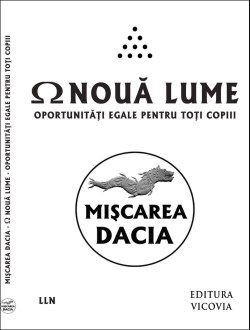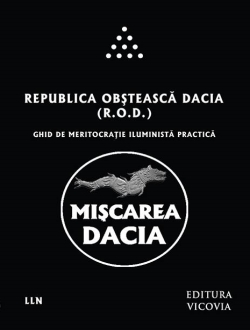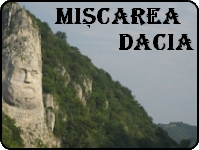Hyperian History Of The World (20th Century, Part 5)
Hyperian History Of The World (20th Century, Part 5)
The fracture of humanity was greatly affecting both the arts and the academic world in the 20th century, but it was far more evident in the tumultuous political events of the time. The 19th century had seen a rise in nationalism in the nations of Europe. At the beginning of that century, both Germany and Italy were, as they had been for centuries, collections of smaller city states. By the end of the 19th century, both Italy and Germany had become single, unified nations.
Nationalism in Europe at the time led to each nation taking great pride in their history and culture, but also to each nation trying to outdo the others in terms of industry, economics, technology and, more ominously, weaponry. New weapons technology led to each nation attempting to make for itself the strongest, most powerful armed force that it could. Inevitably, this arms race would lead to war.
European nations had been perennially at war for centuries, but in the 20th century, partly due to these new weapons, warfare would become greater and more terrible than ever before, involving enough nations so as become known as ‘World Wars’.
The first world war began in 1914 when the tensions which had been building between the nations of Europe finally broke. Driven by national pride and eager to serve and defend their country, hundreds of thousands of soldiers were sent off to fight, yet this was the first major war to make use of the new weapons technologies, the effects of which would be terrible. Fighting in the trenches was simply a slaughterhouse, and the insignificance of the initial causes of the war only made the horror all the more senseless.
In 1917 Russia left the war in order to take care of events back home. The Russian Revolution of 1917 was really two revolutions. The first one, in February, saw the people rise up against the ruling Romanov dynasty, one of the old powers of Europe, leading to a confused state of affairs in which numerous factions tried to take control. This led to the second revolution, in October, which was more of a coup by the Bolshevik party led by Lenin. Eventually, inspired by the communism of Karl Marx, Russia and other countries became the Union of Soviet Socialist Republics firstly under Lenin and, after Lenin’s death, under Josef Stalin.
Meanwhile the first world war had ended and Germany, having lost, entered a period of almost poverty. The nationalistic spirit was still very much alive however, particularly in the younger nations of Germany and Italy. This led to the rise of fascism in both of these nations, firstly in Italy under Benito Mussolini, and secondly in Germany with the rise of National Socialism and Adolf Hitler.
Whilst the USSR had become a communist tyranny under Stalin (far from the utopian equality which Marx had imagined), Germany, under the Nazis, took nationalism to the extreme, with Hitler’s ideology being that the German people were the master race and all others were inferior, with particular attention being given to the Jews.
Hitler’s thirst for power (like that of Napoleon over a century earlier) eventually led to the second world war, which began in 1939. As Hitler attempted to control all of Europe and bring it under his control, he was resisted by the Soviet Union and the allied powers, whilst his allies, Japan, after attacking Pearl Harbour in 1941, launched a war in the pacific against the USA. Across the world, violence erupted, but the main war was between the conflicting ideologies of Hitler and Stalin and the fight between Germany and the Soviet Union took violence and horror to another level. The battle of Stalingrad, for example, lasted over five months and more than two million were killed.
Whilst all this was going on, Hitler was also taking his program of racial superiority to its horrifying conclusion. In the course of the war, some twelve million people, half of them Jews, were taken to concentration camps and slaughtered, in what is known as the Holocaust.
In 1945 the Soviets entered Berlin. Knowing that the game was up, Hitler committed suicide and the Nazi regime crumbled. The concentration camps were liberated and the war in Europe ended. Unfortunately, the war in the pacific continued, with the Japanese refusing to surrender. This caused the USA to take drastic action. The major advances in science, particularly in physics, hadn’t failed to be noticed by military forces, and the new science had led to the creation of the most terrible weapon of all, the atomic bomb. Knowing that the Nazis were working on something similar, leading scientists, including Einstein himself who, being Jewish, had fled Germany to the USA, convinced the US government to develop the weapon themselves before the Nazis did. Eventually, as the Japanese refused to stop fighting, President Harry S. Truman ordered the atomic bomb to be dropped on the Japanese city of Hiroshima, although not before dropping thousands of leaflets on the city from the sky informing the people what was about to happen. Nonetheless the city was destroyed and hundreds of thousands killed. Amazingly, the Japanese government still refused to surrender and the US dropped a second atomic bomb on Nagasaki. Finally the Japanese surrendered and the war came to a horrifying end.
Whilst Hitler had killed twelve million in the holocaust and millions more had died in the war, Stalin, who had won the war, wasn’t doing any better at home. His communist regime had become so extreme that any resistance was snuffed out immediately. It is not known exactly how many millions were killed by Stalin and something similar would happen in China, which also adopted communism under Mao. The theme of the century seemed to be mass slaughter.
The conflict of ideologies now led to the ‘Cold War’ between the USA and the USSR. Whilst the Soviets had communism, the USA had capitalism and democracy. No actual war was fought between these two powers, yet the whole world now lived under the constant threat of Nuclear War, with more and more nations developing these terrible weapons.
However, a better result of the cold war was the quest for both of these nations to outdo each other technologically. This was best represented by the ‘Space Race’. Despite the horror of the century’s events, humanity still achieved some wondrous things. In 1961, Soviet astronaut Yuri Gagarin became the first human being to travel into space. After this, US President Kennedy vowed to outdo the Soviets and land a man on the moon. Kennedy was assassinated in 1963, yet the program continued and, in 1969, Neil Armstrong walked upon the moon. This was a truly staggering achievement, one of the greatest human endeavours in history.
The USA had begun as a new power, yet had soon fallen under the sway of all the old powers. Both the USSR and the Nazis had been new powers, but the wrong people had ended up in charge. The success of the moon landing was the result of the right people being put in charge of it and the best, most intelligent and skilled individuals being utilised and their potential unleashed. Imagine a government that was entirely run in such a manner. What couldn’t we achieve?
The political turmoil of the 20th Century showed that humanity was growing tired of the old powers, yet they are still not gone. They have clung to power relentlessly and no new system has been the right one to overthrow them and heal the fracture of the world. But that new system is now here. Neil Armstrong walked on the moon, but we shall go further…
…to the stars.
Brice Merci – Hyperian












